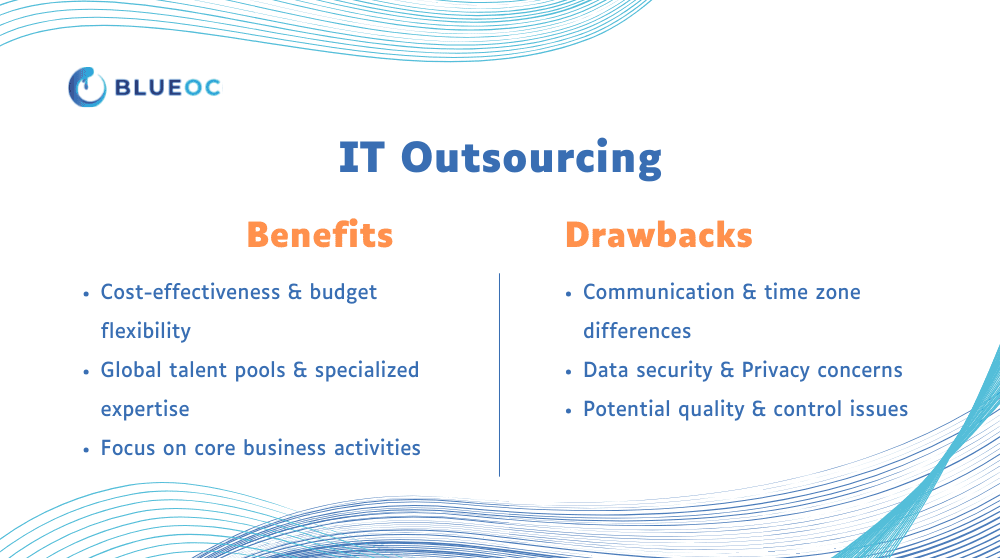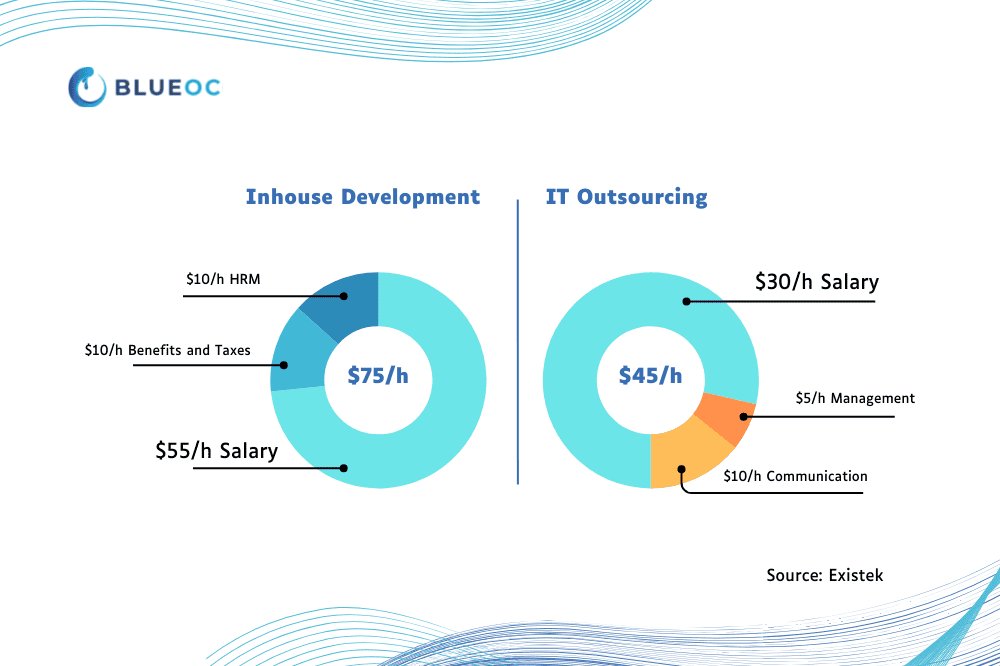
Software plays a pivotal role in today's business landscape, serving as the backbone of innovation and efficiency. In an era dominated by digital transformation, businesses across industries must employ custom software solutions to stay competitive and meet evolving consumer expectations. From enhancing operational processes to enabling seamless customer experiences, software development is integral to unlocking growth opportunities. In sectors like technology, retail, and telecommunications, where rapid advancements are the norm, the continuous evolution of software is crucial for maintaining a cutting-edge edge and ensuring sustained success in the modern marketplace.
Based on data from Statista, revenue in the software market is projected to reach US$698.8 Billion in 2024 while IT outsourcing (in the IT services sector) reaches US$512.5 Billion and the annual growth rate (CAGR 2024-2028) is 5.27% and 10.99% respectively.
When it comes to software development, you should be aware of two growing options: in-house and outsourcing. In-house ensures control but limits in resources, while outsourcing offers cost-effectiveness and diverse expertise. The choice depends on project specifics, budget, and the need for specialized skills, showcasing the evolving landscape of software development options.
So, what exactly do in-house development and outsourcing differentiate itself in the realm of software development? This blog aims to provide you with insights into these models, assisting you in understanding and determining the most suitable approach for your business.
In-house software development refers to the practice of creating and maintaining software solutions using an organization's internal resources, typically within its own organization. This approach involves forming a team of software management team, designers, software developers, engineers, testers and related professionals who work exclusively for the organization.
In-house development has many significant advantages that are still applicable now, including:
However, in-house software development is constrained by a few issues:

Outsourcing software development involves contracting external organizations or individuals to design, develop, and maintain software solutions. This strategy allows companies to leverage specialized skills from third parties, reduce costs, and focus on core business functions while relying on external expertise for specific projects.
Major types of outsourcing:
The details of these types will be discussed in the blog: Onshore, offshore, and nearshore in outsourcing.

Below are some big benefits you can expect from IT outsourcing:
By partnering with BlueOC, a reputable IT outsourcing company with extensive experience in software development across diverse industries, your organization stands to gain multifaceted benefits. Beyond the above advantages, it also opens avenues for strategic consultations in digital transformation. BlueOC's proficiency ensures fast product delivery to market, optimizes processes and offers invaluable insights to enhance your overall operational efficiency and competitiveness.
Certainly, this approach also has some drawbacks:
Potential quality and control issues
Outsourcing may introduce quality and control issues, as the client may have limited oversight and direct control over the external team. Variations in work standards, cultural differences, and divergent methodologies can potentially impact the quality of deliverables, requiring careful management and collaboration to maintain desired standards. This is why it's important to choose a reliable collaborator with a track record of developing software for your industry and who adheres to a professional, standard procedure to identify issues promptly and guarantee high-quality results.

When faced with the decision between in-house and outsourcing for software development, several key factors merit careful consideration.
Evaluate the complexity and specific requirements of the project. In-house development may be suitable for projects demanding constant adaptation and confidentiality, while outsourcing could be more efficient for specialized tasks with clear specifications.
In-house development typically incurs higher upfront costs due to talent acquisition and infrastructure, while outsourcing offers potential cost savings, making it crucial to align the choice with budgetary constraints.
According to a 2020 poll by Existek with over 300 organizations from 23 countries, in-house development costs $75 per hour, whereas outsourcing costs only $45.

In-house development ensures greater control over long-term projects aligned with the organization's vision. Meanwhile, outsourcing may offer scalability advantages, allowing flexibility in team size according to project requirements.
Conduct a thorough risk assessment, factoring in the potential risks and benefits of each option. In-house development carries risks of talent shortages and increased overhead, while outsourcing introduces risks related to communication and control. Develop effective risk management strategies tailored to the chosen approach, ensuring project success and alignment with broader business objectives.

Instagram is a social media app that allows users to share photos and videos with filters and other effects. Instagram was founded in 2010 by Kevin Systrom and Mike Krieger, who were both software engineers. They developed the app using Objective-C and Python and launched it for iOS devices.
Instagram quickly gained popularity and was acquired by Facebook in 2012 for $1 billion. Instagram now has over 1 billion monthly active users and is one of the most influential platforms for online marketing and content.

Jack Ma disclosed that he had hired software development experts from the United States in his book, "Alibaba: The Inside Story Behind Jack Ma and the Creation of the World's Biggest Online Marketplace".
In order to expand his market outside the Chinese market and attract customers from all around the world, he engaged remote developers. Prioritizing the acquisition of talent that he could not locate locally for the house team was his secondary goal.
Alibaba is a prime example of the effectiveness of outsourcing software solutions, with an astounding 674 million active members annually and a dominant 60% market share in China's eCommerce industry.
In summary, navigating the realms of in-house and outsourcing software development reveals a spectrum of benefits and challenges. In-house development ensures control and customization but demands substantial resources. Conversely, outsourcing offers cost-effectiveness and global expertise, albeit with communication challenges. The key is adopting a tailored approach aligned with your unique business requirements. As the tech landscape evolves, continuous evaluation is crucial for sustained success.
If you are looking for a trusted outsourcing partner, consider BlueOC, a company excelling in software development and IT outsourcing. With a proven track record serving clients in the US, Canada, Australia, and Asia, BlueOC's experts can adeptly address your business challenges and provide optimal solutions.


